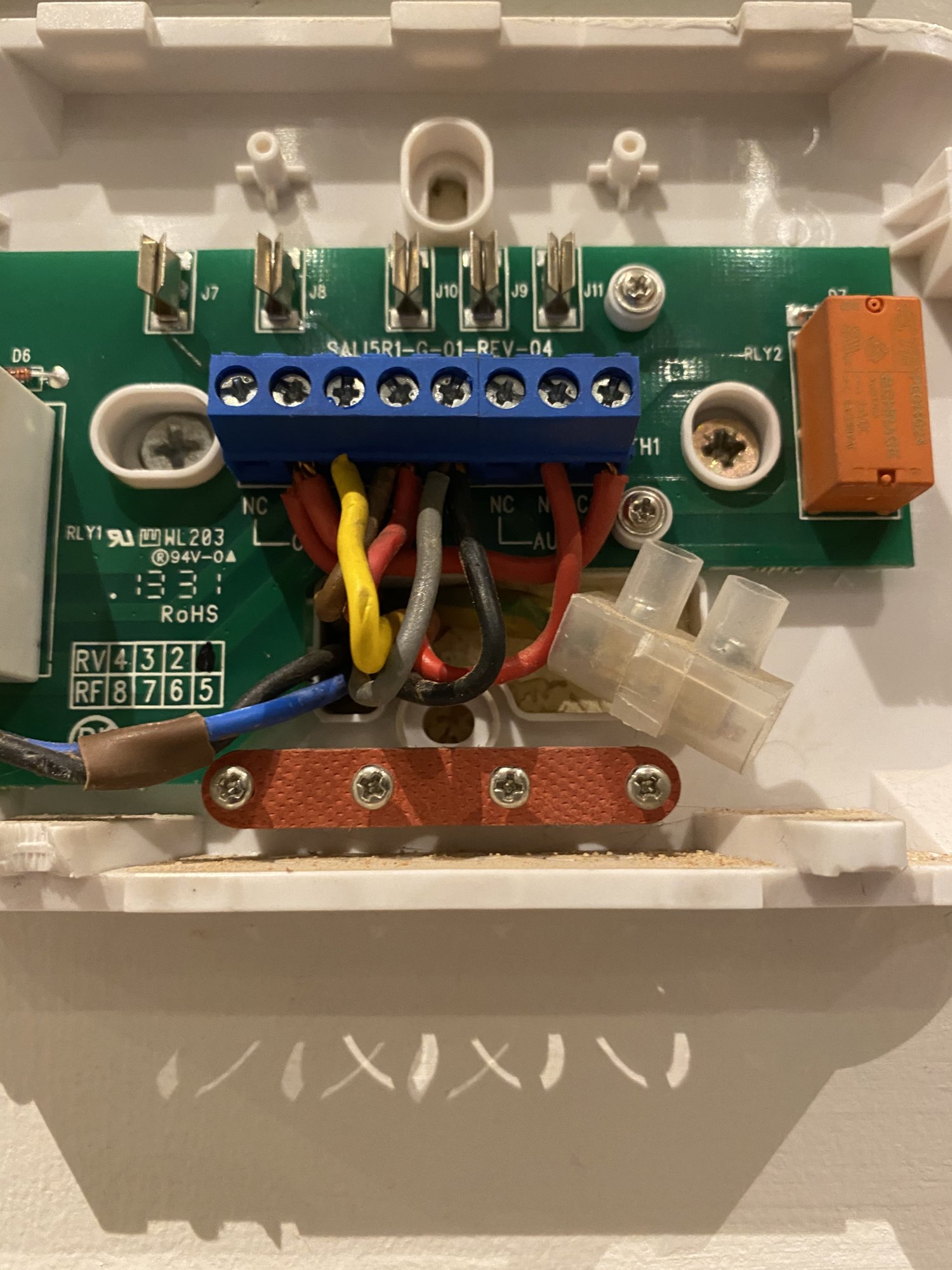Hello, my Salus wi-fi Gateway has finally died and it's time to replace the unreliable system with a Nest.
Could anyone advise on wiring the Nest heatlink to replace the iT500 RX receiver unit please?
The current wiring is as per the images attached, as follows:
1. Red cable from CH COM to CH L
2. Red cable from CH COM to AUX COM
3. Yellow cable from wall to CH NO
4. Brown cable from wall to CH L
5. Red cable from wall to CH L
6. Grey cable from wall to N
7. Black cable from wall to N
8. Red cable from wall AUX NO
And then there are terminated black and blue cables and a separate terminated earth. I assume these can remain or the earth can be connected to the heatlink earth.
Am I correct in the following for the heatlink:
1. Red cable from (2) to L
2. Red cable from (2) to (5)
3. Yellow cable from wall to (3)
4. Brown cable from wall to L
5. Red cable from wall to L
6. Grey cable from wall to N
7. Black cable from wall to N
8. Red cable from wall to (6)
9. Earth to earth
Any help would be greatly appreciated.
Thanks.
Could anyone advise on wiring the Nest heatlink to replace the iT500 RX receiver unit please?
The current wiring is as per the images attached, as follows:
1. Red cable from CH COM to CH L
2. Red cable from CH COM to AUX COM
3. Yellow cable from wall to CH NO
4. Brown cable from wall to CH L
5. Red cable from wall to CH L
6. Grey cable from wall to N
7. Black cable from wall to N
8. Red cable from wall AUX NO
And then there are terminated black and blue cables and a separate terminated earth. I assume these can remain or the earth can be connected to the heatlink earth.
Am I correct in the following for the heatlink:
1. Red cable from (2) to L
2. Red cable from (2) to (5)
3. Yellow cable from wall to (3)
4. Brown cable from wall to L
5. Red cable from wall to L
6. Grey cable from wall to N
7. Black cable from wall to N
8. Red cable from wall to (6)
9. Earth to earth
Any help would be greatly appreciated.
Thanks.



